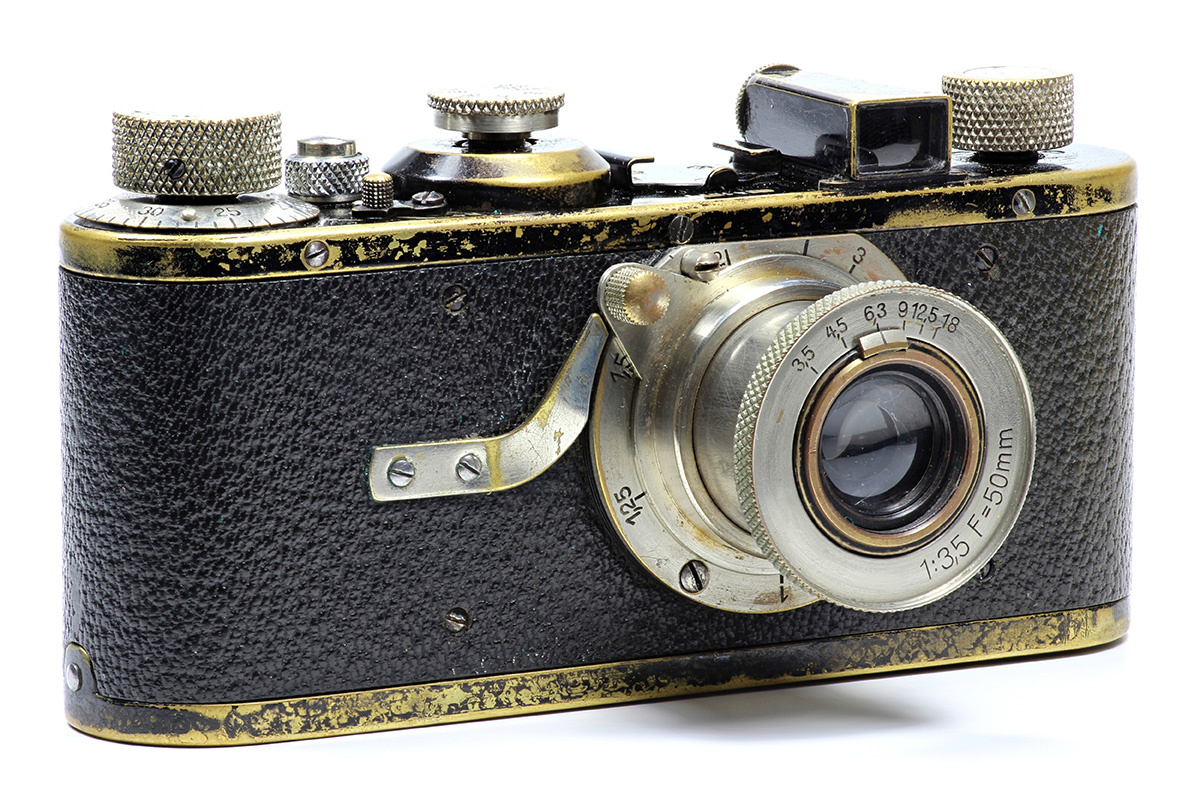
The History of Photography – Part 3:
Leica, Barnack & the Electronic Flash
“I’ve decided: it’s going to be risky” - with these words, the unexpected success of the first 35mm camera Leica began in 1924. With this quote, Ernst Leitz II decided to start production of the 35mm camera, which was developed by one of his employees, Oskar Barnack. This sensation was first presented to the public in 1925 at the spring fair “Kino, Foto, Optik, und Feinmechanik” (Cinema, Photo, Optics, and Precision Engineering) in Leipzig, Germany. The risk paid off; beginning in the spring of 1925, the 24x36mm format became the most-used format for photography worldwide. This is when a revolution in the world of photography took pace. In the third part of our history of photography series, you’ll learn everything there is to know about the 35mm film Leica and the courageous people behind its creation.
Events Leading up to the Leica
In 1914, Oskar Barnack constructed the first 35mm film camera as a snap shot camera, which was supposed to make taking pictures while sightseeing much easier. Its handy format made it very easy to take it with you wherever you went. Ernst Leitz II made a trip to the USA in the same year. He was able to capture everything he wanted to on camera with one of the first models of the 35mm film camera, which was later called the Ur-Leica (Original Leica). He photographed everything that caught his eye while on his trip using this camera. Impressed by the Ur-Leica, Oskar Barnack was assigned the task of developing this camera further in 1920 with the help of Max Berek, who was responsible for developing a lens for the camera. This is when the 35mm film Leica camera is thought to have been officially created. Despite the economic, financial, and technical risks present at that time, Ernst Leitz II decided to take the camera into production. In a time of massive unemployment as well as a shortage of skilled labourers who could put together the camera, which consisted of 190 individual parts, this was an especially high risk. The courage to take this risk, however, was rewarded with success -a completely new photographic system was the result. The Leica replaced the heavy and clunky plate camera for taking individual static photographs and impressed consumers with its relatively light weight and handy size. The Leica became a big seller on the market in no time at all and the snapshot took over the world of photography.
The Courageous People Behind the Leica
Ernst Leitz II
After his education as a precision mechanic and training as a businessman in his father’s company, he took over the optical company Leitz in 1920 as the sole shareholder. He first devoted himself to the development of new microscopes. He was able to accomplish this worldwide breakthrough with the 35mm film camera developed by Oskar Barnack and the interchangeable lenses developed by Max Berek.
Oskar Barnack
![The inventor of the 35mm film camera, Oskar Barnack [Public domain] The inventor of the 35mm film camera, Oskar Barnack [Public domain]](https://fde-sto-shop-p-001.ifolor.net/public/content/dam/ifolor/inspire-gallery/fotografie/gesichte-fotografie3/1200_inspire_fotogeschichte_teil3_Oskar_Barnack.jpg)
Barnack worked as a precision mechanic in Ernst Leitz’s company. He is considered to be the inventor of the 35mm film camera. Starting in 1914, he began to photograph intensively using the prototypes he developed, which later became known as the Ur-Leica.
The Creation of the Electronic Flash
It was already fairly clear early on that it’s nearly impossible to take decent photographs without good lighting. Shortly after the further development of the first 35mm film camera, Johannes Ostermeier really “enlightened” the world in 1928 with the discovery of the flashbulb. To create a flash, he ignited pure magnesium or aluminium in a flashbulb. With this contraption, it was possible to create a very short, albeit very bright, flash of light. A large downside of this first flashbulb, however, was that a flashbulb could be used only once. Something that aided in the process of the flashbulb’s creation was the first light metre developed in Germany, which was created by Dr. Bruno Lange in 1932 in Erlangen, that made it possible to measure the brightness of a motif. The data produced by the light metre were important for the exposure and settings of the aperture. At the end of the 1930’s, Harold E. Edgerton, who was a Professor at the Massachusetts Institute of echnology, was successful in creating the first electronic flash that was able to generate a very short, bright flash of light thanks to the help of a lightning tube (or flash tube). This invention made it possible to take pictures with flash quickly one right after the other. The first camera with built-in flash synchronisation was the Exakta Modell B, created by the company Ihagee in Dresden in 1935.
In the next part of our series you’ll learn more about the invention of colour film, which yet again brought photography to a completely new level.
